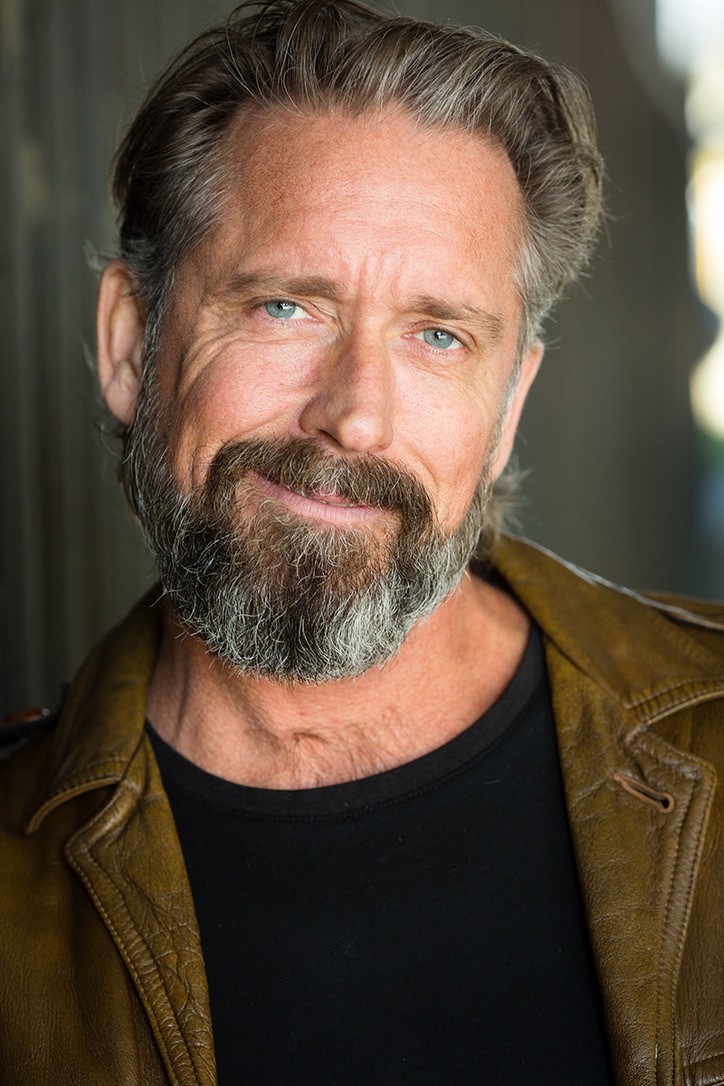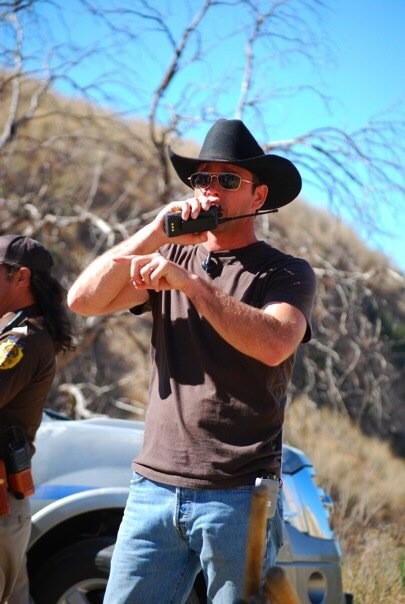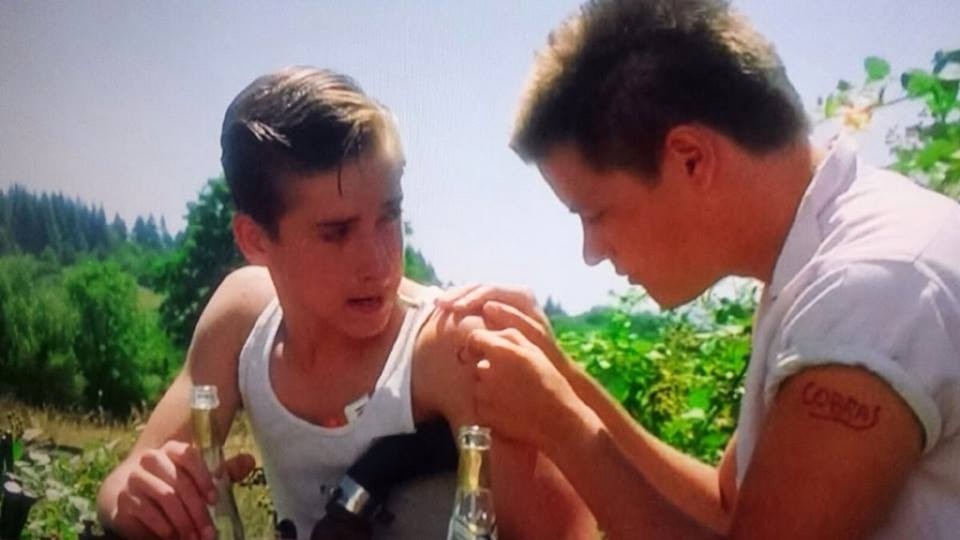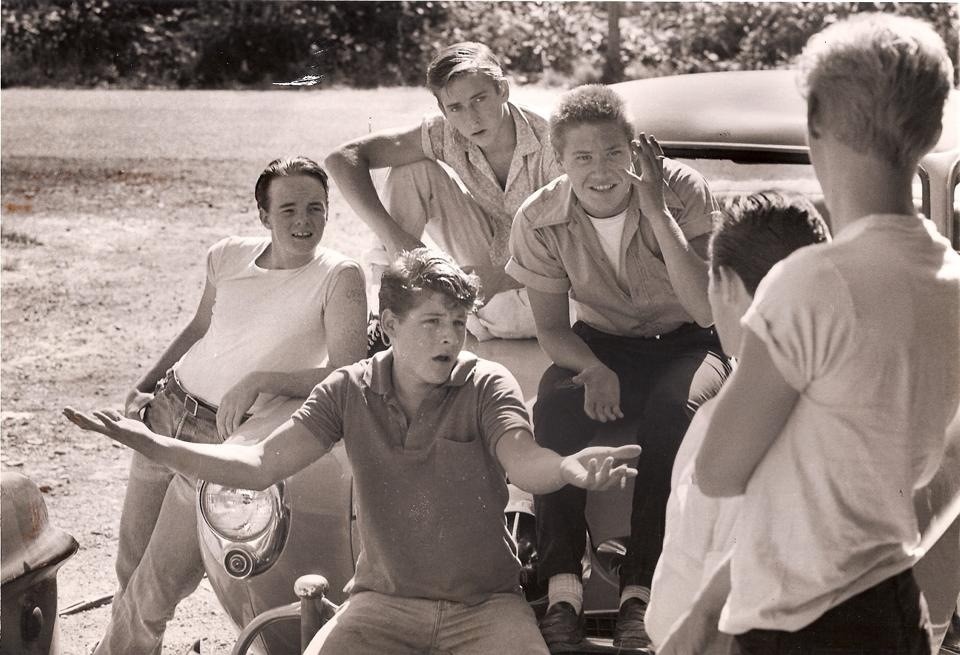Alright – so today we’ve got the honor of introducing you to Korey Pollard . We think you’ll enjoy our conversation, we’ve shared it below.
Korey , appreciate you joining us today. We’d love to hear about when you first realized that you wanted to pursue a creative path professionally.
I have been obsessed with movies and TV shows since I first saw the original Planet of the Apes on TV when I was six. But when the lights dropped, and Star Wars exploded onto the screen when I was eight, it was like gasoline poured on an open flame, and I knew I had to work on movies somehow. But living in North Bend, Oregon, a depressed coastal town, and so young, I had no idea what I wanted to do, nor how to do it. There was no internet and very few books in the local libraries., it was the mid 70’s

Great, appreciate you sharing that with us. Before we ask you to share more of your insights, can you take a moment to introduce yourself and how you got to where you are today to our readers.
My over three-decade career in motion picture and television production involves consulting, strategizing, budgeting, scheduling, implementation, and complex problem-solving on a grand scale at light speed. I have helped produce some indie features and shorts, acted in a few projects, and been a Directors Guild of America assistant director in Los Angeles and all over the US and abroad for the last twenty-six years. I have been fortunate to have been included on the teams of a couple of Emmy award-winning projects, The Assassination of Gianni Versace, Monk, and a few notables, The Orville, 911, Deadwood, and the pilot episodes of Grey’s Anatomy and How I Met Your Mother and many more please check out my IMDb credit list (link) for more.
It is hard to believe it all started by answering an ad I heard on the radio to become “an extra in a major motion picture” when I was eleven in Eugene, Oregon.
For those who may not be familiar, extras are all the people you see in crowd scenes in movies and TV shows, anyone behind the actors in restaurants, bars, sporting events, or walking on the streets. That was my first job, sitting in the stands as a spectator, clapping and pretending to watch the Olympic Trials.
It may sound like a Hollywood fantasy that a kid born in Walla Walla, Washington, and raised in Oregon started as an extra in a crowd scene and moved up to all my experiences, but that is how it all started for me.
The radio ad described the need for locals to fill the stands at Hayward Field, the University of Oregon’s track, for a film about the Olympic Trials called Personal Best, directed by Robert Towne. It was the 1980s, and my parents were all for it.
There are so many unfathomable details I want to share about this. Suffice it to say, I walked onto that first set, felt surprisingly at home, and was enamored by the crew’s focus, teamwork, coordination, and camaraderie. I knew I wanted to be on set for the rest of my life but had no idea in what capacity or how a bumpkin from a small town in Oregon would pursue it.
Oddly, my next opportunity came at sixteen, in precisely the same way as the first: I answered another radio ad to become an extra. Rob Reiner came to Eugene, Oregon, to shoot a movie called Stand By Me.
Through implausible risks, bold outside-the-box thinking, and resourceful moves, I talked my way into an audition. After three auditions, I was cast as Moke, one of the greaser hoodlums in Keifer Sutherlin’s gang who tried to take the body from River Phoenix and the boys, a life-altering experience that I still can not fathom happened to me.
My third opportunity to work on a movie came in a completely different capacity when I missed an audition for a role in a TV movie to be shot in Eugene, Oregon, when I was eighteen because I was fighting forest fires to make money over the summer (long story there). I only told my agents after I left for the summer. Doh! That was a painful lesson in communication to learn.
I found out where the production office was and talked my way into a job as an on-set dresser. I moved to Los Angeles shortly after with a hundred fifty dollars, a quarter ounce of weed, and no clue. But, I was willing to learn everything I could about how projects are filmed, so I said yes to every opportunity for my first four years in LA.
My first job in LA was on a film called The Fabulous Baker Boys in 1988 as a swing gang set dresser, a glorified furniture mover who worked with a team to pick up rented furniture and pianos to dress the sets. From furniture mover, I became a prop guy, responsible for everything the actors touched on camera for a time.
While managing hand props, I procured twenty-eight of the thirty days required to join that union but was let go just shy of being able to join. Welcome to Hollywood! To survive, I pieced together a few years of non-union art department, props, and food stylist work.
In 1992, I met an assistant director who told me he thought I would be a better assistant director than a prop guy. I was offended; I thought he meant I sucked as a prop guy. I didn’t want to be a prop guy forever, but I wanted to be a good one. He saw the people skills and management potential to become an AD in me. He took me under his wing to train me as a production assistant on Clear and Present Danger, Waterworld, and my first two jobs as a DGA assistant director on Ride With The Devil and Thirteen Days. These were all uniquely challenging and complicated projects, and I learned a lot. I am eternally grateful to Scott Robertson, Bob Huberman, and Alan Curtis for opening the door to an amazing career and training me.
The assistant directors are the team responsible for much and seemingly in control of very little. We organize films and TV shows from the script to a schedule and manage the daily shooting once the money is raised, the cast and crew are hired, and the projects are given the green light. Often, when working on locations outside Los Angeles and other production centers, the job requires training people to help who may have never seen the process before. Finding ways to do the job and prepare inexperienced people to work on projects opened my eyes to a love of teaching and mentoring and a passion for diversity education and inclusion training.

Is there mission driving your creative journey?
Yes! My creative partners, Nathan Scoggins, writer/director/producer, and Cress Williams, actor/writer/producer, and I are developing and producing projects using the abovementioned workforce development, diversity education, and inclusion training concepts.
The challenges and opportunities and the experience of training people on previous projects in various locations gave birth to my relentless passion for entertainment workforce development, diversity education, and inclusion training, which drives my creative journey.
Using our independent projects as proof of concept, we aim to produce projects for the major studios and streamers, implementing and fine-tuning this training program at every opportunity.
My role and goal is to develop an entertainment workforce development education and training process to help the motion picture craft guilds, unions, studios, and streamers meet the long-due diversity and inclusion mandates currently expected in our industry while producing projects that cultivate qualified crew members and underrepresented creative voices.
Before the pandemic, more qualified and trained crew were needed to fill the staffing needs of the boom in streaming projects and productions worldwide. After the pandemic in 2021, this need became even more pronounced.
I was fortunate to be challenged to first test the concept as a co-producer on an independent feature called The List in 2007, during which I was handed film school interns to round out the crew. In 2021, I was an executive producer on the indie film What Remains, starring Anne Heche, Cress Williams, and Kellan Lutz. Writer/DirectorProducer Nathan Scoggins and I developed and prepped the film as classes and workshops at JP Catholic in Escondido in a filmmaking program Nathan started. We shot the film in Amarillo, Texas, using the twenty-two student cohort and trained thirty additional local folks for various positions. Of our fifty-five-person crew, only eight in critical positions had worked on a film before.
In June 2023, I co-produced a $90K period student film, Color of Threads, with Walla Walla University in the Pacific Northwest. I used students with a refined version of the professional shadow process again. I am negotiating with the University to offer more workshops and curricula to help them shape a continuing workforce development program.
In addition, I am in early conversations to do something similar with Clemson University. I have created and led workshops, asynchronous online prep, and motion picture management courses for Stage 32, an online platform for independent filmmakers with over 800,000 members. I look forward to doing more of this as a legacy as I near the twilight of an incredible career.
I am so grateful to every person who has stepped up to the plate and allowed me to shape this.

Have you ever had to pivot?
I am pivoting now as we speak in the ways I just described. I am fifty-five years old and have spent most of my life on film and television sets since I was eighteen, being mentored and trained by incredible humans but working in a very closed system. I have cultivated the necessary skills, passion, and courage to approach the studios and streamers with this concept and work with them to fulfill their diversity education and inclusion mandates in content and crew by developing projects with underrepresented groups while simultaneously preparing and training them to deliver the projects.
The program begins by training underrepresented groups with the necessary skills to work on specific films and TV shows using well-established shows and newly green-lit projects. The cohorts are trained with the scripts, schedules, budgets, master plans, and department expectations to prepare them accurately for interviews with foreknowledge of the process and offer continued mentoring through the projects. It then teams the candidates with professionals on the production in entry-level paid positions.
The end game has no end. The goal is to use my experience, strength, and hope to train underrepresented motion picture and television craft people and creatives to represent and tell their own stories by passing the crafts on to them in real time on the job. I have spoken to executives who want to see these things happen, but changing behemoth organizations that are set in their ways with something completely outside the box is complex.
But it is also complicated for a kid from Walla Walla to get the chance to do what I have been fortunate to have done. So, I will keep plodding forward and pivoting. I can no longer go to work without pushing this particular ball forward, and that requires me to step out of my comfort zone of just making a living and swinging big to include others by changing the process and opening doors for others, just like was done for me. Gulp!??
Contact Info:
- Website: koreypollard.com
- Instagram: @migrantfilmworker
- Facebook: https://www.facebook.com/korey.pollard
- Linkedin: https://www.linkedin.com/in/koreypollardcollaborator/
Image Credits
Columbia Pictures Publicity-Black and white, Jesse Escochea-Cowboy hat, Korey Pollard-Screen Shot Getting Tattoo, Mark Atterbury-Heas Shot


